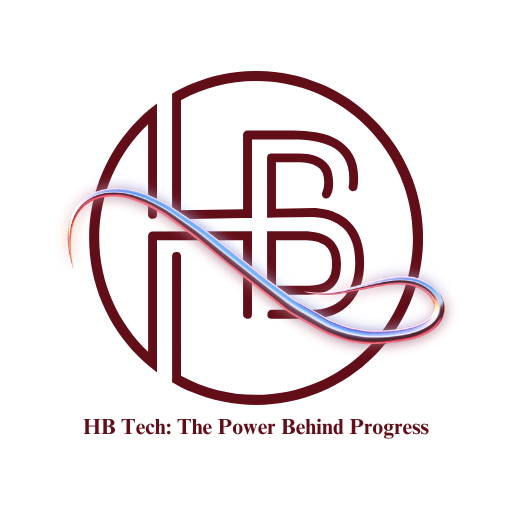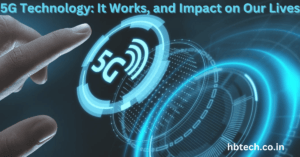Have you ever imagined a world where your coffee machine starts brewing the moment your alarm goes off, your lights turn off when you leave the house , and your car alerts you about traffic before you head out? This is possible thanks to the Internet of Things. or IoT.
IoT is all about connecting everyday devices to the internet, allowing them to collect and share data. It’s changing the way we live, work, and interact with our surroundings. From making homes smarter to transforming industries, IoT is improving convenience, efficiency, and productivity.
Internet of Things
The Internet of Things (IoT) is a system of physical devices connected to the internet. These devices are equipped with sensors, software , and internet connectivity, allowing them to gather and exchange data. This “smart” connection make ‘s devices more interactive and efficient.

For example , think of a fitness tracker on your wrist. It measures your steps, heart rate, and activity levels, then syncs this information with your smartphone. This connection gives you real-time insights about your health.
How IoT Works?
IoT relies on four key components;
- Devices and Sensors: These gather information like temperature, motion, or location.
- Connectivity: Data collected by the devices is sent to the cloud or a local system using Wi-Fi, Bluetooth , or cellular networks.
- Data Processing: The data is analyzed, often in real-time, to create insights or trigger actions.
- Actions and Insights: Based on the data, decisions are made automatically, like turning on lights or sending alerts.
Where is IoT Used?
IoT is everywhere. It’s improving life across many areas, including:
1. Smart Homes
IoT makes homes more convenient and efficient. Smart lights, thermostats , and security cameras can be controlled remotely using apps or voice assistants like Alexa and Google Assistant.
2. Healthcare
IoT is helping doctors monitor patients remotely with wearable devices that track heart rates, blood pressure, and more. This ensures timely medical care and reduces hospital visits.
3. Farming
Farmers use IoT to monitor soil moisture, weather, and crop health. This helps them save water and increase productivity.
4. Factories
In industries, IoT monitors machines to predict maintenance needs, avoiding costly breakdowns. It also streamlines production processes,
5. Transportation
IoT improves transportation by tracking vehicles, optimizing routes, and reducing traffic congestion. Autonomous cars also rely heavily on IoT to operate safely.
Benefits of IoT
1. Saves Time and Energy
IoT automates tasks like turning off unused devices or managing energy consumption, making life more efficient.
2. Makes Better Decisions
With real-time data, businesses and individuals can make informed decisions, such as reducing energy waste or improving customer experiences.
3. Saves Money
IoT reduces operational costs by improving efficiency. For example, it can predict when equipment will fail, reducing maintenance expenses.
4. Enhances Convenience
Smart devices make everyday life easier, whether it ’s controlling appliances remotely or receiving alerts for important tasks.
Challenges of IoT
Despite its advantages, IoT comes with challenges;
- Security Risks: Since devices are connected to the internet, they can be vulnerable to hacking and data breaches.
- Compatibility Issues: Different devices from different manufacturers don’t always work well together.
- High Costs: Setting up IoT systems can be expensive for individuals or small businesses.
- Data Overload: IoT generates a lot of data, requiring advanced systems to process and make sense of it.
Future of IoT
The future of IoT looks bright and full of potential. With advancements in technologies like 5G and artificial intelligence (AI), IoT devices are becoming faster, smarter. and more reliable. By 2025, experts predict there will be over 75 billion connected devices worldwide.
IoT is also playing a big role in sustainability. For example, it’ s helping create energy-efficient homes, reduce food waste in agriculture, and improve public transportation systems.
The Internet of Things is more than just a buzzword—it’s changing the way we live and work. By connecting the physical and digital worlds, IoT is creating smarter homes, more efficient businesses, and even better healthcare.
As this technology evolves , it will continue to make life easier and help us solve big global challenges. The future is exciting, and IoT is at the heart of it.
Frequently Asked Questions(FAQs)
What is the Internet of Things (IoT)?
The Internet of Things (IoT) refers to a network of devices connected to the internet. These devices, equipped with sensors and software, collect and exchange data to automate tasks and provide insights.
How does IoT work?
IoT operates through four main steps:
Devices and sensors collect data.
The devices connect to the internet via Wi-Fi, Bluetooth, or other networks.
Data is processed in the cloud or on local systems.
Insights or actions are generated based on the processed data.Where is IoT commonly used?
IoT has applications in many areas, including:
Smart Homes: Devices like thermostats, lighting systems, and smart assistants.
Healthcare: Wearables that monitor health metrics.
Farming: Tools that track soil conditions and weather.
Factories: Systems that predict equipment maintenance needs.
Transportation: Vehicle tracking and traffic management.What is the future of IoT?
IoT is expected to grow significantly, with over 75 billion connected devices predicted by 2025. Advances in AI, 5G, and edge computing will make IoT devices faster, smarter, and more reliable, creating endless possibilities across industries.









